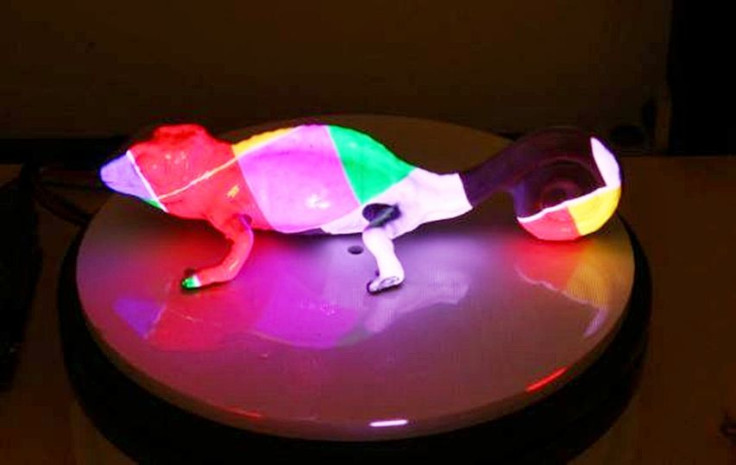MIT Develops Color-Changing Ink; Ford Motor Interested

MIT researchers have developed a color-changing ink that allows users to alter the colors of objects by exposing this special dye to ultraviolet (UV) light.
The new “PhotoChromeleon Ink” is a reprogrammable ink developed by MIT's Computer Science and Artificial Intelligence Laboratory (CSAIL). It can change the color or pattern of an object when exposed to UV light. PhotoChromeleon is a play on words to describe this ink’s chameleon-like nature.
This special ink is consisted of cyan, magenta and yellow photochromic dyes combined into a solution that can be sprayed on objects. Among these many objects are cars, shoes and toys. The painted object is then placed in a box with a projector and UV light.
To use this special ink, a user maps the color or pattern he wants into a special computer program. The program then uses the UV light to activate and deactivate different colors. If the user isn’t happy with the design, he can use the UV light to erase it and create another.
CSAIL researchers said the process takes 15 to 40 minutes to paint objects with the size of a shoe or a model car.
"This special type of dye could enable a whole myriad of customization options that could improve manufacturing efficiency and reduce overall waste," Yuhua Jin, a CSAIL postdoc and lead author of the paper about the ink, said.
"Users could personalize their belongings and appearance on a daily basis, without the need to buy the same object multiple times in different colors and styles."
CSAIL developed PhotoChromeleon from its previous ColorMod system that allows its 3D-printed items to change color.
In ColorMod however, each pixel had to be individually printed, giving a low-resolution output. And because each pixel could only have two states (transparent and its own color), color schemes were severely limited.
In contrast, PhotoChromeleon Ink offers high resolution and a wide range of colors and patterns.
PhotoChromeleon isn’t a perfect product yet. CSAIL researchers admit they still have work to do perfecting the colors of the dyes.
The Ford Motor Company, which helped fund the CSAIL project, is interested in PhotoChromeleon. It hopes this versatile ink might one day cut down on the cost and time required to fabricate automotive parts.
"This ink could reduce the number of steps required for producing a multicolor part, or improve the durability of the color from weathering or UV degradation," Dr. Alper Kiziltas, who specializes in sustainable and emerging materials at Ford, said.
"One day, we might even be able to personalize our vehicles on a whim."

Published by Medicaldaily.com



























